Why We Are Born With Blue Eyes and Then They Change Colors
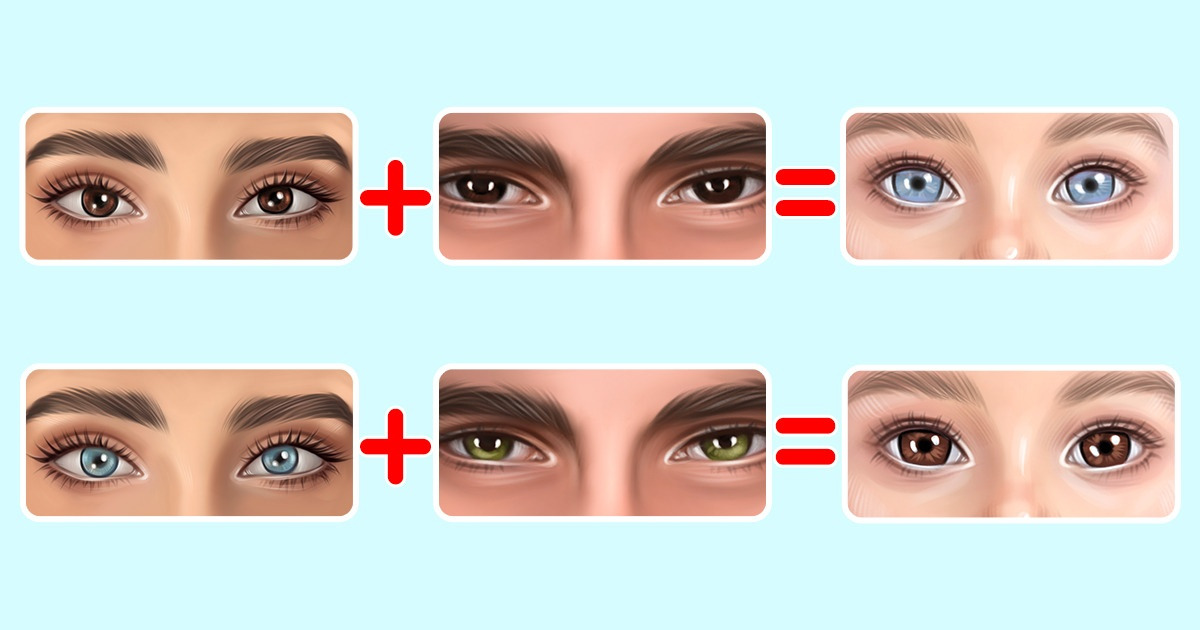
5-Minute Crafts is telling you why we are born with blue eyes and how they change their color later.
What the color of your eyes depends on
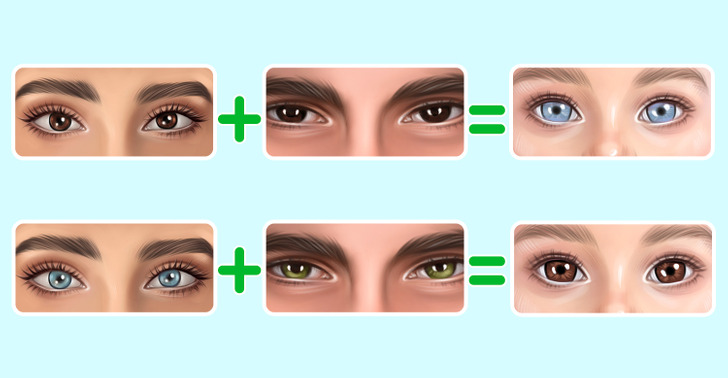
The color of your eyes depends on how much melanin the body produces. It can vary from light blue or gray to dark brown. The color of humans’ eyes is as unique as their fingerprints. There are no 2 people with the exact same eyes.
Eye color is the color of the iris. It has 2 layers.
- Eye color depends on the amount of melanin in the front layer, the stroma.
- Almost everyone, including blue-eyed and green-eyed people, has brown pigment in the back layer of the eyes (called the pigment epithelium).
It was once thought that eye color depended on a single gene. Scientists used to think that something as simple as inheritance caused someone to have more or less melanin. According to this theory, 2 blue-eyed parents could not have a child with brown eyes.
Later, experts found that the inheritance pattern is much more complicated. Many genes work together to determine the color of an unborn child’s eyes. It depends not only on their parents but also on other relatives. Sometimes certain genetic mutations lead to the fact that a person is born with an eye color that none of their relatives had possessed.
What melanin is
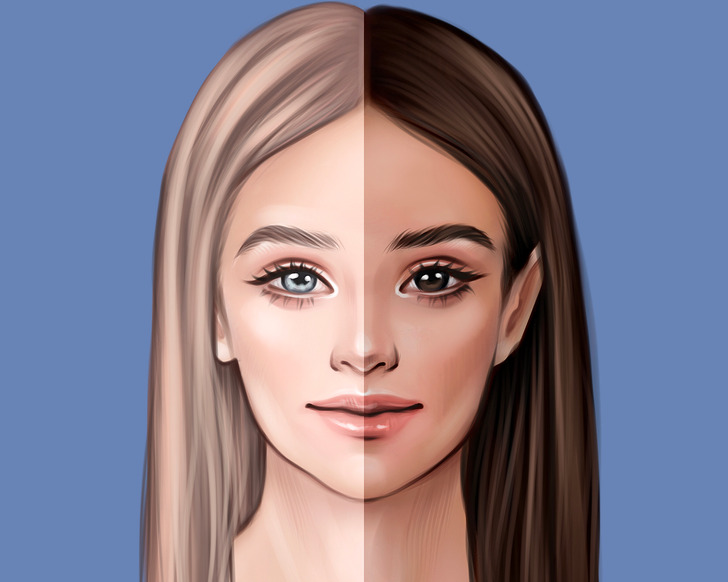
Melanin is a natural pigment that gives color to our eyes, hair, and skin.
Melanin is produced by the cells called melanocytes. All people have the same amount of melanocytes but some produce more melanin than others. The amount of melanin that the body secretes depends on the genes. If your parents have a lot or a little pigment, you are likely to look like them.
Why kids are born with blue eyes
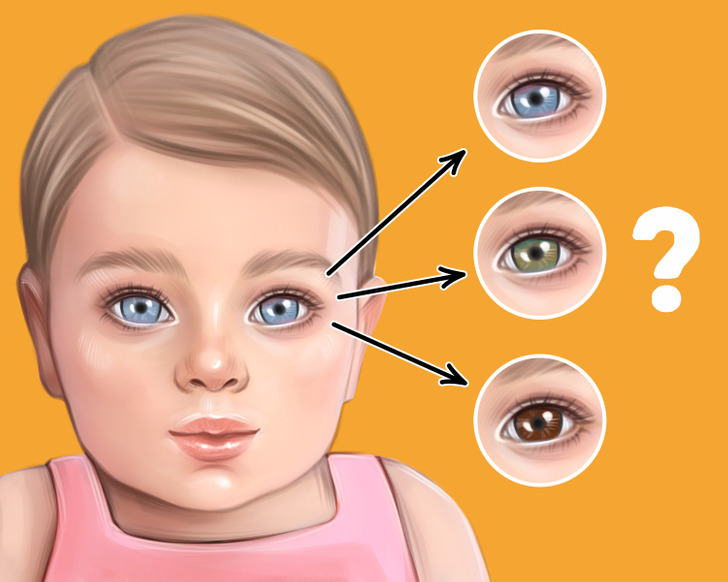
Many kids are born with blue eyes. However, later, the eyes often change their color. It’s the amount of melanin that the baby is born with that affects the eye color. As the baby grows, melanin continues to be produced.
If a newborn with blue eyes begins to produce more melanin in the iris, their eyes darken.
Humans are not born with all the melanin they are destined to have. As they grow, the pigment gets accumulated in the body, including the iris. Usually, the final eye color is set by the age of 2. A small amount of melanin in the iris makes the eyes blue. Those with green or hazel eyes have an average amount of pigment in the iris, while those with brown eyes have a high amount of it.
How our eyes get their color
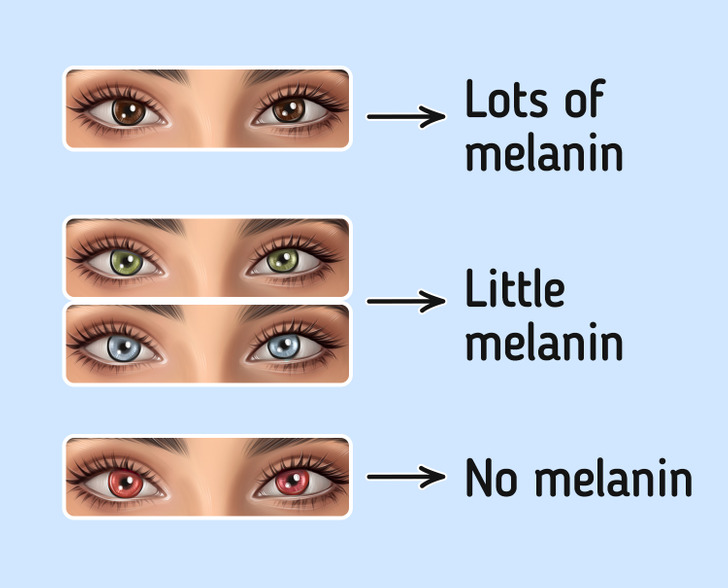
Melanin in our eyes can only produce brown pigments. The iris of the eyes doesn’t contain green and blue colors.
Nevertheless, our eyes can obtain different colors.
- Brown: People with a high content of melanin in the iris tend to have brown eyes.
- Blue: Eyes with less melanin (lighter eyes) absorb less light. Collagen fibers in the eye scatter light and it reflects off the environment. Most of the blue light gets back out, causing the eyes to appear blue.
- Green: Sometimes a small amount of melanin causes the production of yellow pigment. When it is combined with the reflected blue color, the eyes look green.
- Red: The eyes of people with albinism look red. This is because their body either produces very little melanin or none at all. Their eyes may appear red because light first reflects off blood vessels at the back of the retina.
People with light eyes may be more sensitive to light because they have less pigment that protects the eyes from bright light.
Some people have specks or spots of darker or lighter color in their eyes. This is absolutely normal because our eyes are unique. Sometimes the pupil of the iris has one color, and it’s different closer to the edge. This happens if different parts of the iris contain different amounts of pigment.
The most widespread eye color
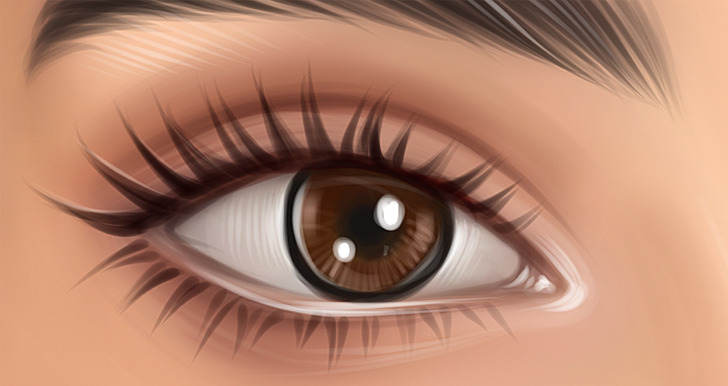
10,000 years ago, all people had brown eyes. Scientists think that the first blue-eyed human underwent a genetic mutation that caused the body to produce less melanin.
Today, the colors of humans’ eyes vary from very light blue to dark brown. But the brown color still remains the most widespread on the planet. The green color, on the contrary, is the least common.
- About 70% to 80% of people have brown eyes.
- 8% to 10% have blue eyes.
- 3% have gray eyes.
- 2% have green eyes.
Of course, these are approximate numbers.